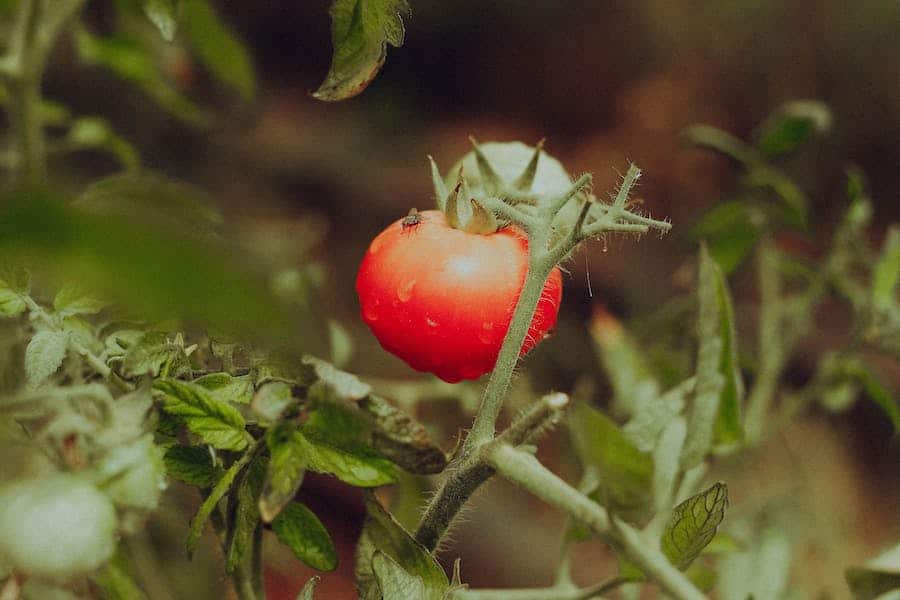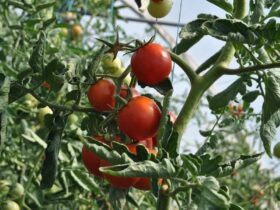As we wander through the lush aisles of the vegetable garden, our eyes are often drawn to the vivacious tomato plants, burdened with their bright, succulent fruits that promise a burst of flavor and vitality. Tomatoes, the rubies of the garden, have long been a staple in various cuisines around the world, cherished for their versatility and robustness in myriad dishes. But beyond the delightful culinary experiences lies an intriguing question that tickles the curiosity of gardeners and botanists alike: Are tomato plants perennial? The journey of a tomato plant, from a tender seedling to a fruit-bearing adult, is a marvel of nature’s cycle, presenting a spectacle of growth, maturity, and, eventually, decay. Conventional wisdom tags them as annuals, with a general lifecycle that spans a single growing season. However, some anecdotes and experiences whisper tales of tomato plants defying this norm, fruiting year after year in specific conditions. This paradox nudges us to explore deeper, unraveling the tapestry of tomato plant biology and examining the factors that dictate their lifespan and productivity. Join us as we embark on this botanical exploration, peering into the life of tomato plants and seeking to uncover whether they cloak a perennial secret within their verdant leaves and luscious fruits.
Are Tomato Plants Perennial?
No, typically, tomato plants (Solanum lycopersicum) are not considered perennial, as they are generally grown as annuals, completing their life cycle in one growing season. However, in tropical climates or controlled indoor environments where frost is not a concern, tomato plants can potentially live and produce fruit for more than a year, exhibiting perennial-like characteristics. The inherent trait of tomatoes being annual is often witnessed globally due to their susceptibility to frost, diseases, and pests as they age.
Basic Characteristics Of Tomato Plants
Tomato plants, scientifically known as Solanum lycopersicum, are one of the most popular choices among gardeners and agriculturalists worldwide. Originating in western South America, tomatoes have traversed the globe, embedding themselves into various cuisines and cultures due to their versatility, vibrant color, and rich flavor. Beyond the culinary appeal, the biological and botanical characteristics of tomato plants make them an intriguing subject of study and a practical inclusion in diverse agricultural systems.
- Physical Structure: Tomato plants present a distinctive physical structure, featuring a stem that can be either determinate or indeterminate in terms of its growth pattern. Determinate varieties, often bush-like, cease growing once they set a terminal bud, usually after producing a specific number of fruit clusters. In contrast, indeterminate varieties continue to grow and produce fruit throughout the growing season until halted by frost or other unfavorable conditions. The leaves are typically pinnate with five to nine leaflets and possess a distinctive, recognizable scent.
- Fruit Variety: Tomato fruits are notably diverse, ranging in size, shape, color, and flavor. From tiny cherry tomatoes to large beefsteak varieties, tomatoes can be round, oblong, or even pear-shaped. Colors span a rainbow from red, yellow, green, purple, to even black, each variety bringing its own unique flavor profile ranging from sweet to tangy. This diversity allows for a plethora of culinary applications, including salads, sauces, soups, and as a standalone vegetable in dishes.
- Growth Cycle: The growth cycle of tomato plants can be broadly categorized into four stages: germination, vegetative growth, flowering, and fruiting. Starting from seeds, which germinate typically within 5-10 days under optimal conditions, the plants progress to develop a vegetative structure. Following vegetative growth, the plants flower, leading to fruit set and maturation. In most climates, this cycle is completed in a single growing season, thus categorizing tomatoes as annuals.
- Climate And Soil Preferences: Tomatoes prefer a warm, frost-free climate and are notably sensitive to freezing temperatures, which can damage or kill the plants. They thrive in well-draining soil with a pH level of 6.2 to 6.8, although they can tolerate slight variations. Tomatoes benefit significantly from consistent watering, full sunlight, and protection from strong winds, enabling them to synthesize more energy for growth and fruit production.
- Pests And Diseases: Tomato plants can be susceptible to various pests and diseases. Some common threats include aphids, tomato hornworms, and diseases like early blight and late blight. These factors often dictate the necessity for vigilant care and preventative measures to ensure a healthy, fruitful growing season.
Benefits Of Growing Tomatoes As Perennials
Venturing into the realm of perennial tomato cultivation unfolds a fascinating dialogue between traditional agricultural practices and innovative horticulture. While generally categorized as annuals, tomatoes can exhibit perennial tendencies under certain conditions, notably in regions free from frost or within controlled environments. Growing tomatoes as perennials introduces a slew of potential benefits, enriching both the gardening experience and practical agricultural production.
Extended Harvest Period:
One of the most alluring benefits of perennial tomato plants is the prospect of an extended harvest period. Under favorable conditions, these plants could potentially produce fruit throughout the year, offering a continuous supply of fresh tomatoes for culinary endeavors and potentially enhancing food security at a localized level.
Reduced Resource Input:
Perennial cultivation of tomatoes may result in reduced resource input in terms of replanting. The avoidance of annual seeding, transplanting, and establishing new plants each year can conserve resources like seeds, soil, water, and fertilizers. Additionally, the accumulated stress and labor involved in seasonal planting are notably reduced.
Environmental Sustainability:
From an environmental perspective, perennial tomato plants might enhance sustainability by mitigating soil erosion and depletion. Their continuous presence in the soil stabilizes it, curbing erosion, while also possibly fostering a steady ecosystem beneath the soil surface that benefits both the plants and the surrounding environment.
Biodiversity And Resilience:
Encouraging the growth of tomatoes over several seasons could also lead to increased biodiversity within the garden or farm. As the plants evolve and adapt to the prevailing conditions of their environment, they may develop traits that enhance resilience against pests and diseases, subsequently bolstering the overall robustness of the crop.
Economic Implications:
On a commercial scale, perennial tomatoes could potentially offer economic advantages by providing consistent production and reducing the costs associated with annual planting and establishing new crops. This consistency might translate into a steady market supply and possibly stabilize prices, benefiting both producers and consumers.
Challenges Of Growing Tomatoes As Perennials
While the perennial cultivation of tomatoes presents a myriad of potential advantages, it is imperative to navigate through the various challenges that might surface in the endeavor to uphold them beyond their typical annual life cycle.
- Susceptibility To Pests And Diseases: As tomato plants age, they become increasingly susceptible to a plethora of pests and diseases, such as aphids, hornworms, blights, and wilt. Managing these issues over an extended period can become labor-intensive and may require the implementation of rigorous pest and disease management strategies, which could entail additional costs and resource inputs.
- Optimal Growing Conditions: Maintaining the ideal growing conditions conducive to perennial growth can be a formidable task. Tomatoes typically demand ample sunlight, consistent watering, and well-draining, nutrient-rich soil. Ensuring that these conditions are met continuously, especially in regions where they are not naturally prevalent, might necessitate the deployment of controlled environments, which come with their own set of challenges and financial implications.
- Decreased Fruit Production And Quality: Over time, perennial tomato plants may experience a decline in both fruit production and quality. The luscious, abundant yields of the first growing season might not be mirrored in the subsequent years, which could potentially render the endeavor economically unviable, especially for commercial growers.
- Resource Management: Continuous cultivation and care for perennial tomato plants require sustained resource management. This involves consistent watering, fertilizing, and pruning to ensure healthy growth and fruitful yields. Over an extended period, these inputs can accumulate, imposing a considerable demand on resources and labor.
- Genetic Stability: Perennially grown tomatoes, if allowed to self-seed, may exhibit variations in subsequent generations due to open pollination, potentially resulting in inconsistencies in fruit characteristics. For growers who prioritize maintaining the purity of specific varieties, this could pose a significant challenge.
Practical Tips For Growing Tomatoes
Growing tomatoes can be a rewarding endeavor, offering gardeners a bounty of fresh, flavorful fruits during the harvest season. Whether you’re cultivating tomatoes for the first time or looking to refine your current practices, considering a few practical tips can enhance your success and bolster your yields.
Choose tomato varieties that are well-suited to your local climate and intended use. Consider factors like the length of your growing season, as well as your culinary preferences, to select varieties that will thrive and meet your needs.
In regions with shorter growing seasons, starting your tomato seeds indoors can provide a head start. Plant the seeds 6-8 weeks before the last expected frost and transition them outdoors once the temperatures are consistently above 50°F (10°C).
Plant tomatoes in a location that receives at least 6-8 hours of direct sunlight daily. Ensure the soil is well-draining and has a pH of approximately 6.2 to 6.8. Amend the soil with organic matter to boost nutrient availability.
Implement supports, such as stakes, cages, or trellises, early in the growth stage to manage the plants as they mature, preventing them from sprawling on the ground and reducing susceptibility to diseases.
Maintain a consistent watering schedule, providing deep, infrequent watering that moistens the soil to the root level. This approach encourages robust root development and reduces the risk of issues like blossom end rot.
Provide ample nutrients through balanced fertilization. Consider a fertilizer that’s higher in phosphorus (the middle number in fertilizer ratios) to promote fruitful yields.
Conclusion
While traditionally recognized and largely grown as annuals, the question surrounding the perennial capabilities of tomato plants cultivates a fertile ground for exploration and debate. Tomatoes, in their classic cultivation method, germinate, blossom, fruit, and complete their life cycle within a single growing season. However, under certain conditions—particularly in frost-free climates or controlled indoor environments—their life can extend, demonstrating a semblance of perenniality by living and producing for more than one season. This dual nature, both in practice and potential, offers intriguing implications for gardening practices and agricultural production.
FAQ’s
Can I Grow Perennial Tomatoes In Containers?
Yes, tomatoes can be grown in containers and potentially managed as perennials if they are given adequate care and nutrients and are protected from adverse weather conditions, particularly frost.
Does Perennial Tomato Cultivation Require Specialized Knowledge?
While basic gardening knowledge is foundational, understanding the specific needs and potential challenges of tomatoes in extended cultivation will enhance success in growing them perennially.
Can I Save My Tomato Plants For Next Year?
Yes, it’s possible to save your tomato plants for the next year, particularly if you live in a frost-free zone. If you live in an area where frost occurs, consider moving your plants indoors or into a greenhouse during the colder months to protect them. Ensure they continue to receive adequate light, water, and nutrients to survive through to the next growing season.




















Leave a Reply